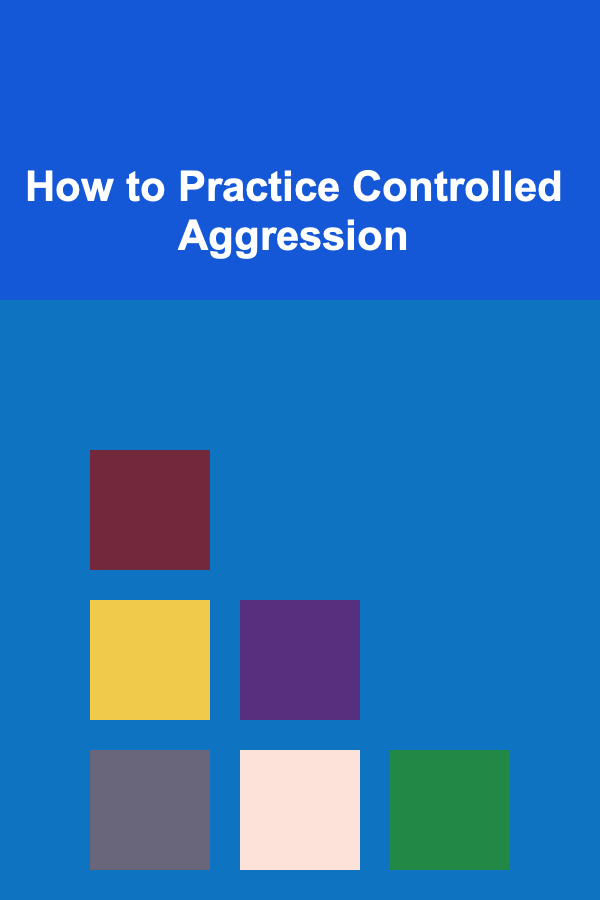
10 Tips for Budgeting Your Quilting Supplies
ebook include PDF & Audio bundle (Micro Guide)
$12.99$6.99
Limited Time Offer! Order within the next:

Quilting is a beloved craft that combines creativity, skill, and patience. Whether you're an experienced quilter or just starting, quilting can be an expensive hobby. From fabric and thread to batting and tools, the costs of quilting supplies can add up quickly. However, with a little planning and smart shopping, you can create beautiful quilts without breaking the bank. In this article, we'll explore 10 tips to help you budget your quilting supplies effectively, ensuring you can continue to enjoy your craft without overspending.
Set a Quilting Budget
The first step in budgeting your quilting supplies is to set a realistic budget. This will give you a clear idea of how much you're willing to spend each month or year on quilting supplies. Factor in the costs of fabric, thread, batting, tools, and other supplies you need for your quilting projects.
How to Create Your Budget:
- List Your Needs: Start by listing out the supplies you'll need for upcoming projects. This could include fabric, batting, thread, needles, and any special tools for your quilt.
- Prioritize: Determine which supplies are essential and which ones can be purchased later or substituted with more affordable options.
- Track Your Spending: Keep track of how much you're spending on quilting supplies each month. This will help you adjust your budget if you need to.
By setting a budget and sticking to it, you can ensure that you're not overspending on quilting supplies.
Buy Fabrics on Sale or Clearance
Fabric is often the largest expense in quilting, so it's essential to take advantage of sales and clearance events. Many fabric stores offer discounts on end-of-bolt fabrics, overstock, or seasonal sales. Shopping at these times can save you a significant amount of money.
Tips for Buying Fabrics on Sale:
- Sign up for Newsletters: Many fabric stores send out newsletters with notifications of upcoming sales and discounts.
- Buy in Bulk: If you're working on a large project, buying fabric in bulk can often reduce the price per yard.
- Check Online Stores: Online fabric retailers often have sales that are not available in physical stores. Keep an eye out for deals on your favorite online fabric shops.
By being patient and waiting for the right deals, you can save money on fabric without compromising on the quality or style of your quilting projects.
Use Fabric Scraps for Smaller Projects
Fabric scraps can be a quilter's best friend. Instead of buying new fabric for every project, consider using scraps from previous quilts or leftover pieces from your fabric stash. Smaller projects, such as mini quilts, wall hangings, or pillow covers, can be made entirely from scraps.
Benefits of Using Scraps:
- Reduce Waste: Using scraps helps reduce fabric waste and allows you to use up materials you already own.
- Unique Designs: Scraps can be used creatively to make unique and colorful designs that stand out.
- Free Materials: Once you've accumulated scraps, they are essentially free to use for your next project.
Collecting and using fabric scraps can help you save money on future quilting projects while also adding an eco-friendly element to your crafting.
Plan Your Quilts in Advance
Planning your quilts in advance is a great way to save money and avoid impulse buys. When you plan your quilt design ahead of time, you can estimate how much fabric and other materials you'll need and avoid over-purchasing. This also gives you time to look for sales, discounts, or other ways to save on supplies.
How to Plan Effectively:
- Create a Quilt Design: Sketch out your quilt design or choose a pattern that you'd like to make. This will help you estimate fabric requirements more accurately.
- Choose the Right Fabrics: Based on your design, choose fabrics that fit both your aesthetic and budget. Stick to fabrics that are versatile and can be used in multiple projects.
- Account for Batting and Thread: Don't forget to factor in the cost of batting, thread, and any other supplies needed for finishing your quilt.
By carefully planning your quilts, you can avoid costly mistakes and ensure that you're not buying unnecessary materials.
Make Use of Coupon Codes and Discounts
Coupon codes and store discounts are fantastic ways to save money on quilting supplies. Many quilting and fabric stores offer regular discounts or have loyalty programs that can help you save on future purchases.
Ways to Save with Discounts:
- Check Coupon Websites : Websites like RetailMeNot, Honey, and Coupons.com often list discount codes for fabric stores and craft shops.
- Join Loyalty Programs: Many quilting stores offer loyalty programs where you can earn points for each purchase that can be redeemed for future discounts.
- Take Advantage of Promotions: Be on the lookout for special promotions like "buy one get one free" or "free shipping" offers.
By staying on top of discounts and promotions, you can stretch your quilting budget further without compromising on quality.
Invest in Quality Tools That Will Last
While it's tempting to buy cheaper quilting tools, investing in high-quality tools can save you money in the long run. Durable tools, such as rotary cutters, rulers, and sewing machines, will last for many years and provide better results than their cheaper counterparts.
Key Tools to Invest In:
- Rotary Cutter: A good rotary cutter can make your cutting process much faster and more accurate. Choose one with replaceable blades so you can continue to use it for years.
- Sewing Machine: If you're serious about quilting, a quality sewing machine is a must. A machine with quilting-specific features can save you time and effort in the long run.
- Cutting Mat: A self-healing cutting mat will ensure your rotary cutter remains sharp and your work surface stays protected for a long time.
While quality tools may have a higher upfront cost, they will pay off in terms of durability and performance, saving you money on replacements in the future.
Buy Pre-Cut Fabrics
Pre-cut fabrics, such as charm packs, jelly rolls, and fat quarters, are often a cost-effective way to buy fabric. These pre-cut pieces are already measured and cut, saving you time and effort. Additionally, many fabric stores offer pre-cut fabrics at a discount compared to buying individual yards of fabric.
Advantages of Pre-Cut Fabrics:
- Convenience: Pre-cuts save time because the fabric is already cut and ready to use.
- Cost Savings: Many pre-cuts are priced more affordably than buying individual yards of fabric.
- Creative Flexibility: Pre-cuts often come in coordinated collections, making it easier to create cohesive quilt designs.
Pre-cut fabrics are an excellent option if you're looking for affordable, time-saving ways to create beautiful quilts.
Use Simple Quilt Patterns
Sometimes, the simplest quilt patterns can be the most striking. By choosing less intricate patterns, you can save on fabric costs, reduce the time needed to complete the quilt, and even cut down on the need for expensive quilting tools.
Benefits of Simple Quilt Patterns:
- Less Fabric Required: Simpler designs usually require fewer pieces of fabric and therefore cost less.
- Faster to Complete: Simple quilts are quicker to finish, allowing you to move on to new projects without feeling overwhelmed.
- Easier to Learn: If you're a beginner, working with simpler patterns helps you build your skills without complicating the process.
Consider using simple yet beautiful quilt patterns that don't require a lot of time, materials, or advanced quilting techniques.
Buy from Discount Fabric Stores and Thrift Shops
Discount fabric stores and thrift shops can be goldmines for quilters on a budget. Many of these stores offer fabrics at a fraction of the cost of traditional quilting shops. You can often find a wide variety of fabrics, including vintage, second-hand, or discontinued prints, that can add a unique flair to your quilts.
Where to Look for Discount Fabrics:
- Thrift Stores: Look for old sheets, pillowcases, or clothes made from cotton that can be repurposed into quilt fabric.
- Warehouse Stores: Some discount fabric warehouses or online shops offer great deals on bulk fabric purchases.
- Online Marketplaces: Websites like eBay, Etsy, and Facebook Marketplace can have fabric bundles at discounted prices.
By exploring these less conventional fabric sources, you can find high-quality materials at a lower cost.
Recycle and Repurpose Old Quilts
If you have old quilts or fabric scraps lying around, consider repurposing them for your next project. Recycling materials not only saves money but also adds a personal touch to your quilts.
Ways to Repurpose Quilts:
- Use Old Quilts as Batting: If you have old quilts with fabric that's still in good condition, consider using them as batting or backing for new quilts.
- Incorporate Old Fabric: Cut up old quilts or clothes made of cotton to create a quilt with sentimental value.
- Use Vintage Fabrics: Vintage fabrics from old quilts can give your new projects a unique, nostalgic charm.
Repurposing old materials is an eco-friendly and cost-effective way to continue your quilting without buying new supplies.
Conclusion
Quilting doesn't have to be an expensive hobby. By setting a budget, shopping smart, using fabric scraps, and investing in quality tools, you can enjoy quilting while keeping your expenses in check. With a little creativity and careful planning, you can create beautiful, functional quilts that don't break the bank. Happy quilting!
Reading More From Our Other Websites
- [Home Cleaning 101] How to Keep Your Pet's Area Clean and Odor-Free
- [Metal Stamping Tip 101] Choosing the Right Brass Alloy for Optimal Stamping Performance
- [Home Soundproofing 101] How to Enhance Your Home Theater with Soundproofing Techniques
- [Personal Care Tips 101] How to Achieve a Full, Voluminous Blowout with Hair Mousse
- [Screen Printing Tip 101] Layered Ink Magic: How to Achieve Vibrant Multi‑Color Prints with Minimal Passes
- [Home Staging 101] How to Stage a Home for Virtual Tours: Best Practices for Real Estate Agents
- [Small Business 101] How to Launch a Successful Pop‑Up Store in a High‑Traffic Urban Mall
- [Home Budget 101] How to Budget for Energy-Efficient Home Upgrades
- [Organization Tip 101] Why You Should Create a Daily Cleaning Routine
- [Needle Felting Tip 101] Best Color‑Mixing Strategies for Gradient Effects in Needle Felting

How to Create a Seasonal Utensil Rotation System
Read More
How to Practice Controlled Aggression
Read More
How To Manage Transitions and Change for Kids
Read More
How to Use a Chain Wear Indicator: A Comprehensive Guide
Read More
10 Tips for Digital To-Do List Apps: Choosing & Mastering Them
Read More
How to Track Student Loan Interest Deductions
Read MoreOther Products

How to Create a Seasonal Utensil Rotation System
Read More
How to Practice Controlled Aggression
Read More
How To Manage Transitions and Change for Kids
Read More
How to Use a Chain Wear Indicator: A Comprehensive Guide
Read More
10 Tips for Digital To-Do List Apps: Choosing & Mastering Them
Read More